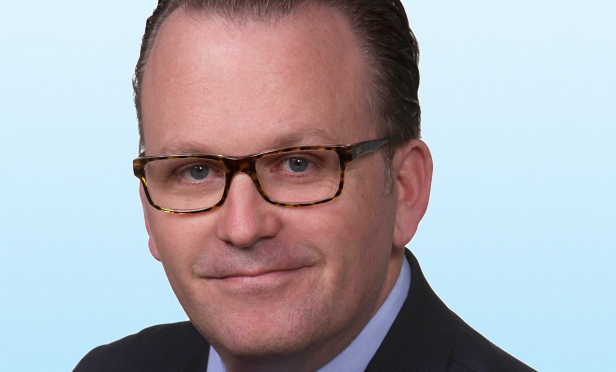 Pupil: “It really is simple logic: if most of the consuming population is in the west, most of the nation’s economic power will be in the west.”
Pupil: “It really is simple logic: if most of the consuming population is in the west, most of the nation’s economic power will be in the west.”
IRVINE, CA—The country is turning from a traditional factory and manufacturing economy to a dominant knowledge-based one, which has always been based in the west, Colliers International’s west region president Martin Pupil tells GlobeSt.com. Colliers says one of the reasons he is growing Colliers’ institutional-investment division in the west—having, as we recently reported, recruited Michael Roberts, a new San Diego-based capital-markets office-market expert from a major competing firm—is because there is a seismic shift, a manifest destiny for the Millennial generation occurring as the nation’s economic heart moves from east to west.
For the next three years at least, unless the Fed drastically raises interest rates, or there is a sudden, unforeseen and so-called “black swan” event, the institutional-investment market should remain not just healthy, but it should dominant all other areas of commercial real estate, Pupil tells us exclusively. We recently sat down with him to get his take on Colliers’ strategy when it comes to the west’s capital markets. Part 1 of our interview appears below; stay tuned for part 2, coming up on the Orange County page
GlobeSt.com: You just announced an addition in San Diego who will focus mainly on office properties. Will there be more such announcements in the near future?
Pupil: In a word, yes. While I don’t think it prudent to broadcast to the world—and to our competitors—what our overall strategy is for what we call our institutional-investments division, I can tell you that we have recently recruited and retained accomplished senior capital markets brokers in many different specialties, and we will continue to do so. We are building upon our already accomplished capital-markets brokers and putting together an even-more-powerful multi-disciplinary team that will mirror the needs of our institutional clients no matter what property type or category.
We are firmly committed to the capital markets in the west because we are seeing a seismic shift geographically and economically from a factory- and manufacturing-based economy to a knowledge-based economy, and that’s based in the west. I can’t emphasize that enough. Our future growth is tied to what is happening here. We are confident much of the nation’s future growth will occur in the west in every sector of the economy, not just the commercial real estate market.
GlobeSt.com: On what do you base this confidence?
Pupil: It’s based on job numbers, population growth, our own research, the government’s economic indicators and a slew of other proprietary research models, all of which show that most of the economy’s major progenitors of growth—the tech sector and the new tech manufacturing sector—which includes the Apples, Googles, Twitters, Pinterests and all the other major tech players, plus Tesla, Fisker and even Detroit-based Chevrolet’s driverless-car division, along with the major biotech firms, are expanding westward—to San Francisco, Los Angeles, San Diego, Oakland and, of course, San Jose’s Silicon Valley. As these firms move west, so too do the major and minor logistics firms that are moving freight from the ports of L.A. and Long Beach to the rest of the nation. So are the Amazons, Costcos, Walmarts and others who depend on logistics and an effective storage and distribution network to service their stores, customers and wholesalers. It really is simple logic: if most of the consuming population is in the west, most of the nation’s economic power will be in the west.
GlobeSt.com: Do you have other examples of this?
Pupil: Let’s take Verizon, the old NYNEX phone company for New York City. Although still nominally headquartered in New York City, Verizon suddenly found that its largest and most-profitable division was its wireless Southern California region. That was a game-changer for them. No longer was the wireline division on top; the wireless division had suddenly overtaken them. Southern California is the most populous area of the most populous state in the nation. It also has the greatest number of licensed automobile driver, hence the most mobile-phone users. Verizon’s Southern California region is located in five buildings about a mile from our west region headquarters in Irvine. It would not surprise me one bit if its five-building campus here soon became its wireless headquarters—not New York.
Let’s also look at the electric car you will driving—or not driving, but letting it drive you—in the next few years, the pill you will be taking to ward off illness, the mobile phone you will use to call your kids, the games kids will be playing on innumerable electronic devices. All are, or soon will be, coming out of the west. Design, manufacturing, marketing—it’s all here in the west, or it soon will be. That’s why we are building a strong, multi-disciplinary capital markets team here to reflect our clients’ needs and to ensure we get the business. I can’t emphasize enough how serious the capital-markets deals we do are. This is like playing professional baseball on the Major League level, the Big Leagues. There is nothing small about these deals, and it takes the best-trained, most-knowledgeable and smartest people to work in the capital markets. The price tag alone on most of these deals sets them apart from all others.
GlobeSt.com: So, is New York City losing its “center of the universe” title that it has held for the last century?
Pupil: Yes, and let me give you an example. In San Francisco in just this past year, we’ve seen a surging tech economy, the highest rates of leasing and pre-leasing ever recorded, a pipeline of under-construction projects so robust it’s near bursting and an effective unemployment rate of zero. All of that has telegraphed to market observers that this year will mark the continuation of San Francisco’s “Glittering Age,” a term coined by our regional executive managing director there, Alan Collenette. Alan, who is not given to overstatement, means exactly what he says and he has said it over and over and over again. No longer is San Francisco that quaint little tourist town overlooking the beautiful bay. It is the center of this new economy—hands down, no debate. Just look at the numbers.
Stay tuned for part 2 of this interview, coming up on the Orange County page.

















 Copyright © 2024 ALM Global, LLC. All Rights Reserved.
Copyright © 2024 ALM Global, LLC. All Rights Reserved.